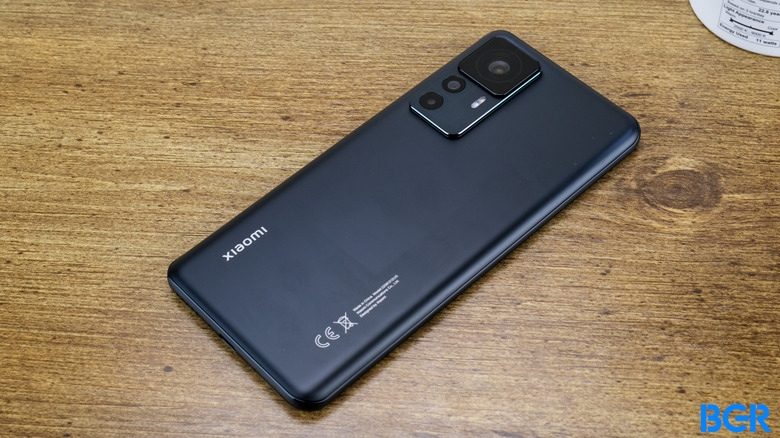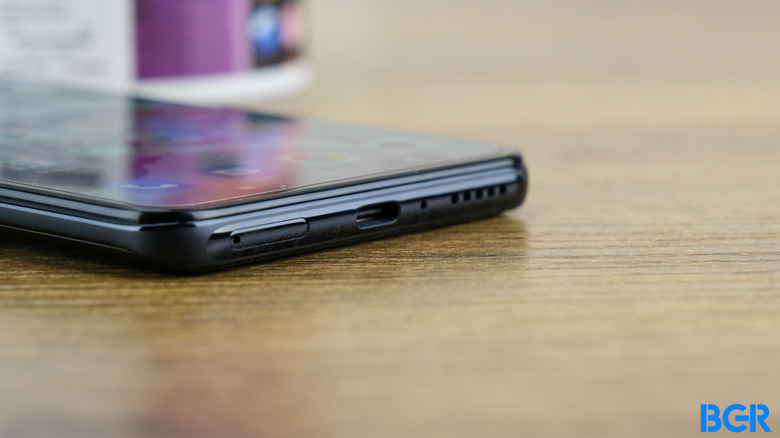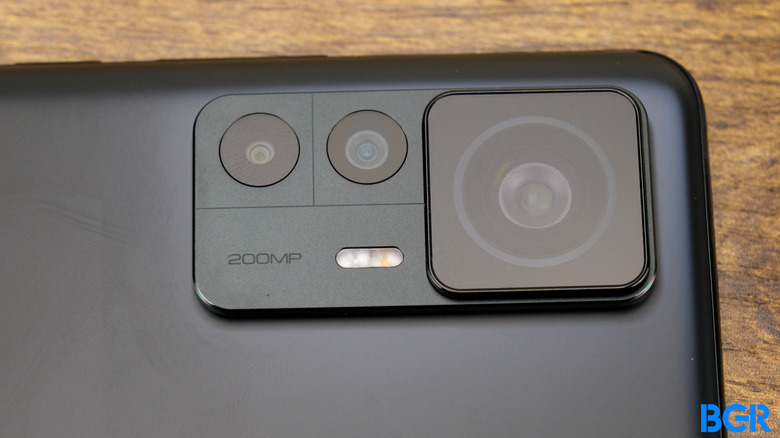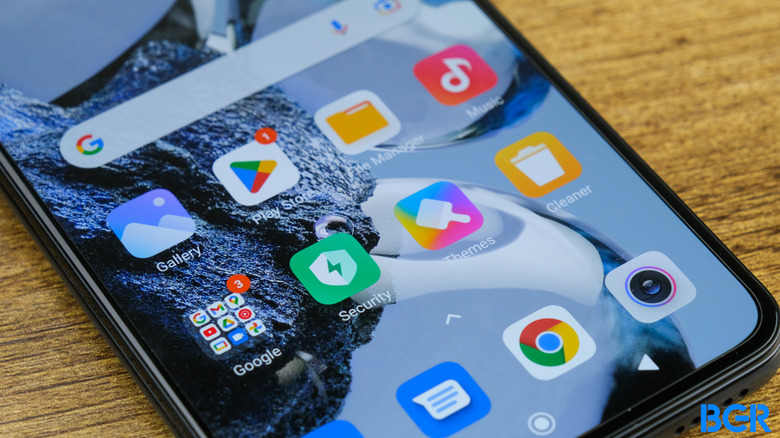Xiaomi 12T Pro Review: A Camera Rollercoaster
Xiaomi is pushing boundaries. There was a time when it seemed like the only thing about smartphone cameras that mattered was "how many megapixels" they offered. These days, things are much more complex — but a high camera resolution can still be impressive. The new Xiaomi 12T Pro, for example, boasts a camera with a massive 200-megapixel resolution.
But a phone still has to do more than just offer a high-resolution camera to compete. Does the Xiaomi 12T Pro do enough to justify a relatively high price?
Well, it depends what you're looking for in a phone. Here are our thoughts after using the Xiaomi 12T Pro for a while.
Xiaomi 12T Pro

The Xiaomi 12T Pro boasts a great display, good performance, and some pretty excellent camera tech — but it's no perfect.
- Excellent performance
- Some cool camera features
- A good price
- Great display
- 2MP macro camera is bad
Xiaomi 12T Pro design
The first thing to notice about the Xiaomi 12T Pro is its design, and design is perhaps the least interesting thing about it. That's not because it's ugly — on the contrary it's actually pretty sleek and stylish. But it's far from unique.
On the front is a 6.67-inch display with a small hole-punch cutout. On the back is a relatively bare design with a rectangular camera module. On the right side you'll find the power button and volume rocker. And on the bottom cam be found the USB-C port and SIM tray.
The phone is available in a few colors — black, silver, and blue. We're reviewing the black model, and it looks good. The device feels pretty good in the hand too, though the back is a little slippery, so you'll need to be careful not to accidentally drop it.
Xiaomi 12T Pro display
The 6.67-inch AMOLED display on the Xiaomi 12T Pro offers a 1220 x 2712 resolution, with a 120Hz refresh rate. It looks excellent.
The resolution isn't quite as high as you'll get on some other screens, but that's not a huge deal. I've long thought that refresh rate was far more important than resolution, within reason. And, this phone still delivers 446 pixels-per-inch, which I think is more than enough.
The high refresh rate ensures that the phone feels smooth and responsive. And, it gets bright enough for most use too. At 900 nits peak brightness, the phone is bright enough even for outdoor use, and I never found myself having to squint to see it properly.
Under the display can be found an optical fingerprint sensor, which works fine. It can be a little slow, and occasionally failed to properly read my fingerprint, but most of the time it did the job.
Xiaomi 12T Pro performance
Under the hood, the Xiaomi 12T Pro is no slouch. The device comes with a Qualcomm Snapdragon 8+ Gen 1, which is easily the most powerful non-Apple mobile chip out there. That's coupled with either 8GB or 12GB of RAM and either 128GB or 256GB of storage. Our review model offers 8GB of RAM and 256GB of storage.
In day to day use, the phone excelled. It was easily able to handle heavy multitasking and mobile gaming, loading games nice and quickly, and never stuttered or freezed up. I never found myself wishing I had the 12GB RAM model, which was nice.
Benchmarks confirm the excellent performance on offer by this phone.
- GeekBench 5: 1291 single-core, 4235 multi-core
- 3DMark Slingshot Extreme: 2804
These results are excellent, and while they don't quite match the performance prowess on offer by the Asus ROG Phone 6, they still show a phone that can easily hold its own.
Xiaomi 12T Pro battery and charging
The Xiaomi 12T Pro comes with a 5,000mAh battery, and I found that it was easily able to get through a full day of even relatively heavy use, and into the next day. Even those that game a lot should find that the Xiaomi 12T Pro will get them through a full day, which is always helpful.
Even when the device does eventually run out of juice, you can charge it quickly. Like, really quickly. The device supports Xiaomi's 120W charging, thanks to HyperCharge. The result? You'll charge from 0 to 100% in less than 30 minutes. This tech has been out for a while, but it never ceases to amaze me. And, it supports wireless charging, in case you're not in as much of a rush to get out the door.
Xiaomi 12T Pro camera
The camera, of course, is the main attraction. The device comes with a triple camera array, which is made up of one 2-megapixel macro camera, one 8-megapixel ultrawide camera, and the headline feature, a 200-megapixel main camera.
Lets get the boring cameras out of the way. I really dislike the fact that manufacturers are still shipping poor-quality 2-megapixel macro cameras. They look bad, and that on this phone is no exception. The ultrawide camera is fine, but pretty underwhelming most of the time.
Then there's the main camera, and it's pretty cool. The 200-megapixel camera offers optical image stabilization, and generally produces vibrant colors with excellent detail and a good amount of contrast. Overall, the main camera is reliable, especially in well-lite environments. By default the camera outputs a 12.5-megapixel image, but you can change that to 50 megapixels or even 200 megapixels.







Honestly, though, I find the 50-megapixel mode to be the best. It produces excellent sharpness, while still mostly retaining the same clean, high-contrast image. The 200-megapixel mode mostly just makes the file size of images larger without really improving quality. Despite the lack of telephoto, the camera is still able to produce good images when zoomed at relatively low levels. At 2X, photos mostly looked the same at 1X, which was great to see.
The device is able to capture great low-light shots too. They still offer plenty of detail without really increasing noise, and overall images looked pretty natural. Even dark ultrawide photos turn out pretty good — though don't bother taking low-light macro mode shots. Sometimes, the device automatically switched to Night Mode, however other times you may want to switch to it manually.
The front-facing camera, which is a 20-megapixel camera, also produced great shots, though they're not particularly all that special. In general, they offer good color reproduction with a decent level of detail.
Xiaomi 12T Pro software
The Xiaomi 12T Pro comes with Xiaomi's MIUI 13, which is built on Android 12. The general interface remains the same as previous-generations of MIUI, which is heavily inspired by iOS. For the most part, things are where you would expect them to be if you've used an Android phone in the past. I don't love the look, and heavily altered version of Android in general, but it works perfectly fine.
Conclusions
The Xiaomi 12T Pro is an interesting device. It performs very well and boasts some pretty cool camera tech, but doesn't generally impress when it comes to the non-200-megapixel cameras and the overall software experience.
The competition
If you're interested in the 12T Pro, it's worth considering the standard Xiaomi 12T too. That device replaces the 200-megapixel camera with a 108-megapixel one, offers a MediaTek Dimensity 8100-Ultra processor, and doesn't have Dolby Vision support. It's slightly worse in most ways, but also a fair bit cheaper — so it's worth considering.
It's also worth considering the OnePlus 10T, which is priced similarly and also offers a Snapdragon 8+ Gen 1. It doesn't have the 200-megapixel camera but the camera is still quite good, and the display is slightly lower-resolution.
Yes. It's a great-performing phone with some awesome camera tech.
Xiaomi 12T Pro

The Xiaomi 12T Pro boasts a great display, good performance, and some pretty excellent camera tech — but it's not perfect.
- Excellent performance
- Some cool camera features
- A good price
- Great display
- 2MP macro camera is bad
More coverage: Read our Xiaomi Smart Band 7 Pro review.




